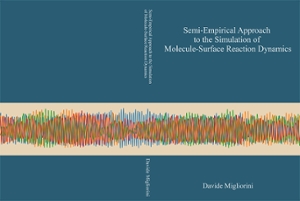Proefschrift
Semi-empirical approach to the simulation of molecule-surface reaction dynamics
Catalysis is of extreme relevance in the production of everyday materials and plays a central role in many aspects of our life.
- Auteur
- Migliorini, D.
- Datum
- 14 maart 2019
- Links
- Thesis in Leiden Repository

Catalysis is of extreme relevance in the production of everyday materials and plays a central role in many aspects of our life. On the industrial level, metal based catalysts are widely used to produce molecular hydrogen, which can be used as fuel, or nitrogen, one of the building blocks in the fertilizers synthesis, and other fundamental molecules. A better understanding of heterogeneous catalyzed processes would help to design better and more efficient catalysts but it is hard to achieve because of their high level of complexity. Molecular dissociation on metal surfaces is usually a multi-step process which can be best investigated through a joint experimental and theoretical effort. The comparison of molecular beam experiments with molecular dynamics simulations can help to improve over the theoretical method used, called density functional theory (DFT), in order to achieve chemical accuracy (i.e., errors smaller than 1 kcal/mol) for the reaction studied. As we show in the research reported in the thesis, being able to accurately compute the dissociation barriers for methane on metals like nickel and platinum is of great importance in order to make predictions about the most reactive sites on the surface and possibly, in the future, it can help improving over industrial catalysts.
